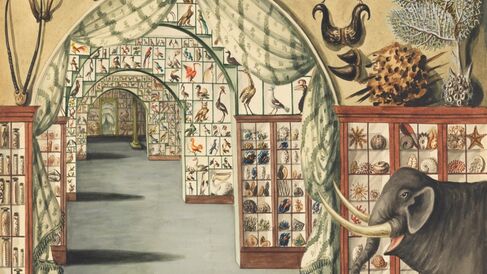Research Context

The research project seeks to revise previous portrayals of British natural history during the ‘age of revolutions’ that emphasize decline and stagnation during this period.[1] Existing scholarship has examined the management of global networks by elite figures like the wealthy naturalist Joseph Banks (1743–1820),[2] and although some attempts have been made to understand lesser naturalists’ integration,[3] these often neglect political aspects. Some attention has been paid to conflicts between local and metropolitan naturalists within Britain,[4] and how naturalists from different imperial contexts saw each other competing over progress in their discipline.[5] We also know a lot about the management of global collections at the height of the British Empire.[6] But, to this date, there has not been any sustained examination of the global dimensions of new approaches to natural history across the British empire in the crucial period around 1800.
The practice of natural history is underpinned by systems of classification used to order, describe and interpret nature.[7] Recent studies have demonstrated that the use of so-called ‘natural’ systems, which was gaining a foothold on the continent in the late eighteenth century, was held back by powerful elites in Britain.[8] Yet research is still to be commenced on why British naturalists like Robert Brown (1773–1858) eventually started to engage with the new approaches to the natural world as well.[9]
Concentrating on naturalists who mediated between European elites and indigenous societies, ‘Natural History in the Age of Revolutions’ forms interdisciplinary collaborations between historians of science, global historians and curators. Previous research has explored the concept of ‘go-betweens’ and ‘knowledge brokers’, concentrating on entrepreneurial initiatives associated with specific locales and events, such as the Calcutta Botanic Garden or the Macartney Embassy to China.[10] By analysing several understudied collections, such as those compiled by Alexander Anderson in the West Indies, Robert Brown in Australia, William Roxburgh in India, George Caley in New South Wales, Allan Cunningham in New Zealand and Charles Miller in Sumatra, this project will instead focus on naturalists engaging with the full extent of the British Empire.
